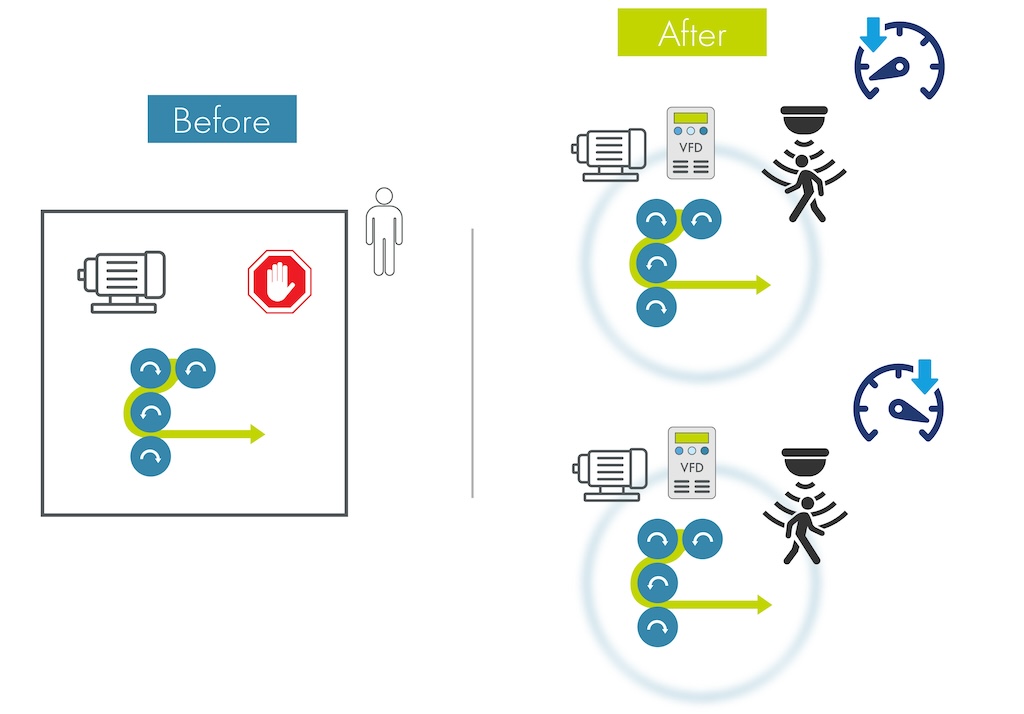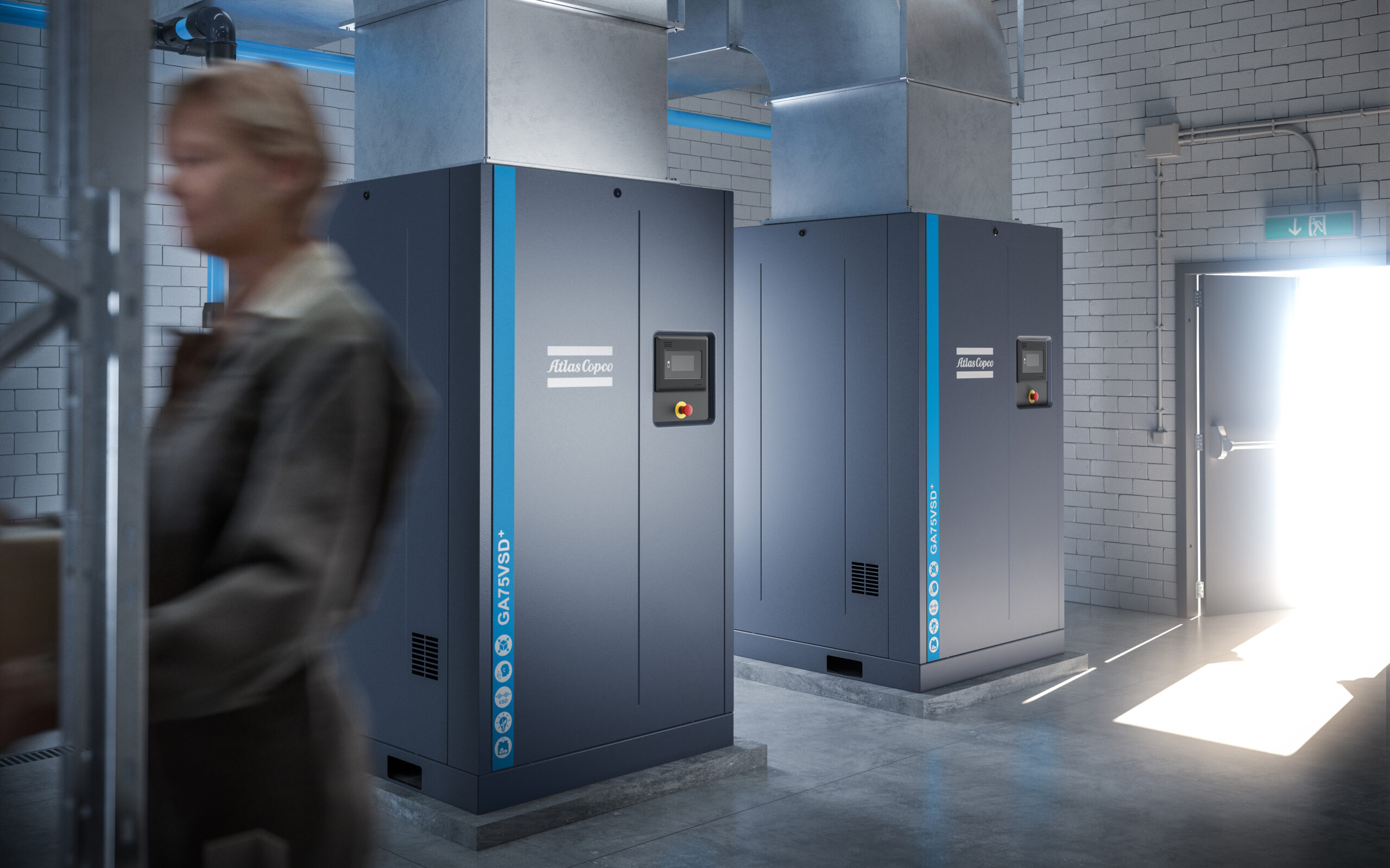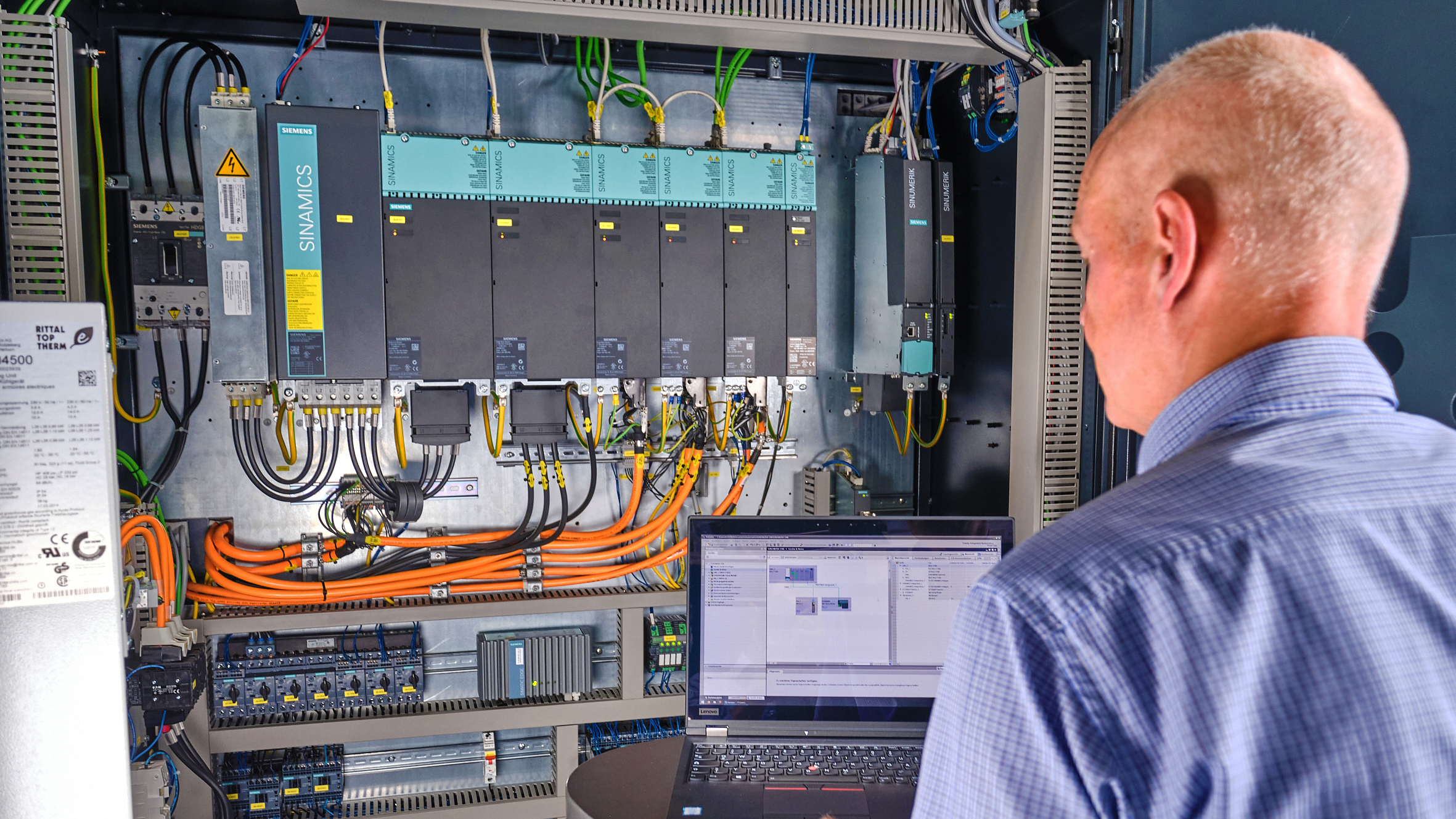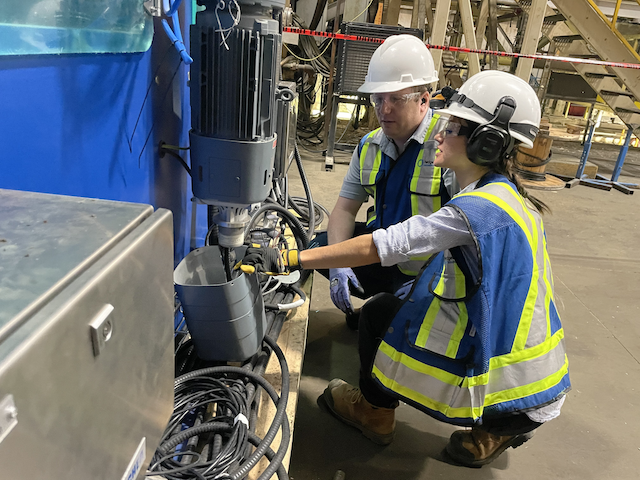Key concepts Read and understand instructions. Follow proper unloading and installation procedures. Run tests with the motor uncoupled and coupled.
Key concepts&/HEADLINE>
Read and understand instructions.
Follow proper unloading and installation procedures.
Run tests with the motor uncoupled and coupled.
Before leaving the factory, the performance of each large electric motor is thoroughly tested to verify that the purchaser’s requirements have been met. So why doesn’t a motor operate as well at the site as it did at the factory?
Experience shows that many field problems can be avoided by following some simple guidelines.
Read the instructions
Before the motor arrives, read the manufacturer’s instruction book and specification sheet or outline drawing. Have a copy of the motor test report handy to compare site readings of critical parameters, such as bearing temperature rise, vibration, no-load current, etc., with those taken at the factory. If items such as couplings or lube systems are going to be installed at the site, these instruction books are also needed.
If the instruction book guidelines are not followed, the warranty is jeopardized.
Foundation preparation
A rigid foundation is essential (Fig. 1). The foundation should consist of solid concrete footings or piers extended deep enough to rest on a solid sub-base. The motor must be level to prevent oil leakage along the shaft and to allow the shaft to float freely, without constant thrust against the bearing shoulders.
Reference should be made to the manufacturer’s outline drawing for all the dimensions necessary for location and mounting (hold-down bolts, foundation bolts to the sole plate, conduits, condulets, ventilating ducts, and sole plates).
Errors frequently occur when foundation bolts do not align with the motor’s mounting holes. When this situation happens, the motor’s holes must be elongated. Too drastic a modification of the motor could void the warranty. Make a template that matches the dimensions on the motor outline drawing and have the foundation design allow for some variation in the location of the foundation bolts.
Bracket-type motors (furnished with sole plates or mounted on the bedplate of the driven equipment) are aligned by means of shims between the motor foot and the rigid base. The motor manufacturer supplies these shims only when ordered. The shims should be slotted so they can be slid in and out from the mounting feet without having to remove mounting bolts. Jackscrew holes are normally provided by the manufacturer to facilitate this alignment.
Jack the motor feet up, insert the shims, remove the jackscrews, tighten the motor bolts, and check for soft foot. When the alignment is correct, remove the jackscrews and add grout. Grouting must be done carefully to ensure the sole plates are uniformly supported for their full length.
Inspection, rigging, and unloading
When the motor is received, it should be immediately inspected for possible shipping damage.
Lift points for the motor are identified by markers applied by the manufacturer (Fig. 2). These markers can get removed, painted over, or otherwise obliterated. Such parts as fan covers, ventilating box, bearing brackets, etc. may have their own hoisting lugs, designed to carry only their own weight, not that of the entire motor.
Lift points must be integral parts of the motor frame. Depending on the complexity of the motor ventilation design, these lift points may require removal of covers and the use of spreader beams. If there is any doubt about proper lifting, consult the instruction book or the manufacturer’s service department. Motor lift points are NOT designed to lift whatever the motor is attached to, such as a bedplate or driven equipment.
The factory packages the motor assuming it will be in-stalled and running within a 30-day period, and it is shipped without oil in the oil sumps. If the motor is to be stored for a longer period, the user must prepare the motor for short-term storage. Consult the instruction book, because storage preparation necessitates connecting heaters, adding oil to the bearings, and establishing a program under which the shaft is rotated by hand or barring tool to replenish oil in the bearings and prevent rust.
Installation
At the time of motor start-up, it is much too late to discover there is a problem with the site. Closely examine the environment in which the motor is to operate and specify and purchase the features and accessories necessary for troublefree operation and ease of maintenance.
Specify all optional features, accessories and, auxiliary devices needed. The motor manufacturer cannot anticipate needs and will quote per the specifications.
Electrical connections
The outline drawing or specification supplied by the manufacturer should show the location of the main motor terminals for connection to the power source, along with auxiliary devices ordered, such as winding and bearing resistance temperature detectors (RTDs), space heaters, etc. Terminations will be supplied in conduit boxes only when specified.
The motor must be properly grounded to protect personnel from the potential of shock should the winding insulation break down. Motor designers are aware of this potential problem and provide a grounding connection on the motor frame (Fig. 3). The integrity of the ground should be verified by testing the ground resistance with an instrument designed specifically for that purpose.
Acceptance testing
To simplify troubleshooting at the site and offer maximum protection of the motor from startup errors, a satisfactory uncoupled test run should be performed before proceeding to the coupled test run.
Electrical apparatus are vulnerable to the effects of air, moisture, dust, and transportation. Resistance of the stator winding insulation should be measured before operating voltage is applied to the motor, whether it is for checking rotation or for running. The test voltage and minimum acceptable value can be found in the instruction book in accordance with IEEE 43, clause 9.3. With a new winding, the cause for low readings is likely to be contamination by moisture. Drying of the winding will be required before power can be applied.
All shipping braces, blocking, and shipping tags must be removed. Motors with sleeve bearings must have the oil reservoir filled to the correct level. Turn the shaft by hand or with a barring tool to ensure there is free and smooth rotation. Check the torque on the mounting bolts and factory-made bolted joints on brackets for any looseness that may have occurred in transit.
Start the motor to check that shaft rotation is correct. During this initial run, monitor the bearing temperature. The rate of temperature rise is more indicative of impending trouble than the actual temperature. If the rate is more than a 25-deg F rise in the first 10 min or more than 40-deg F rise after 30 min, or the motor exhibits high vibration or noise, shut it down immediately and investigate. If everything appears to be normal, continue the run until bearing temperatures are stable.
After the motor is coupled, start it in accordance with the instructions for the motor control. If the motor fails to start turning immediately, shut the power off as quickly as possible and investigate. Once again, watch the rate of bearing temperature rise, and if everything appears to be operating normally, continue the run until the bearing temperatures stabilize. Check motor line currents for balance. Once this test run is complete, shut down the power and allow the motor to cool by coasting to a stop.
Once these basic steps, and any others specified by the manufacturer, have been completed, the large motor should be ready for service.
—Edited by Joseph L. Foszcz, Senior Editor, 630-320-7135, [email protected]
&HEADLINE>More info&/HEADLINE>
The author is available to answer questions about large motor installations. He can be reached at 800-451-8798.
&HEADLINE>Examples of improper handling&/HEADLINE>
Motors arriving without a protective tarp. Even though the motor is designed for outdoor use, that doesn’t mean it is designed to withstand mud, rain, sleet, snow, dust, etc. blown into it.
Repositioning the motor so it is not riding in the upright condition. This practice seriously damages bearings and occurs frequently because of space limitations.
Motors secured to the truck by tiedowns to the shaft, conduit boxes, or other parts that are not designed as hold-down points.
&HEADLINE>Motor specifications to consider&/HEADLINE>
Air filters with manometers to warn when they need changing
Temperature detectors with alarm and shutdown settings
Lightning arresters and surge capacitors, located close to the motor in the lead termination box
Automatic oilers
Oil sump heaters
Fungus proofing of windings and paint (in tropical climates)
Leak detectors in water coolers
Abrasion protection on the windings to prevent airborne dust from entering the motor fan compartment and sand blasting the insulation
Shaft or frame vibration monitoring devices
Noise reduction provisions
&HEADLINE>Do’s and Don’ts&/HEADLINE>
Do’s
Take precautions to protect the motor during installation. High humidity can lower insulation values and require a dryout. Energize space heaters, if supplied.
Notify the manufacturer of unexplained shortages or shipping damage.
Ensure that all instruction books, parts lists, and outline drawings are stored safely and copies are available for installation personnel.
Turn spare parts over to the storeroom.
Make frequent inspections to determine if there are any installation problems.
Check that all shipping braces and tags have been removed.
Check that accessories are installed, connected, and operating.
Have the manufacturer’s service representative check out the final installation and be present at startup so his technical assistance will be immediately available in the event of problems.
Don’ts
Store the motor outside, exposed to the elements. It can be contaminated by moisture.
Move the motor to the construction area or uncrate it until necessary. Never move the motor without the shipping brace installed.
Drop or bump the motor.
Allow unauthorized personnel to open the motor.
Allow personnel to climb on or use the motor as a scaffold.
Weld or do metal cutting in the area of the motor.
Allow high-pressure air hoses to be used to disperse construction dirt or clean up the area around the motor. Keep the motor area as clean as possible. Dirt is an enemy of motors.



